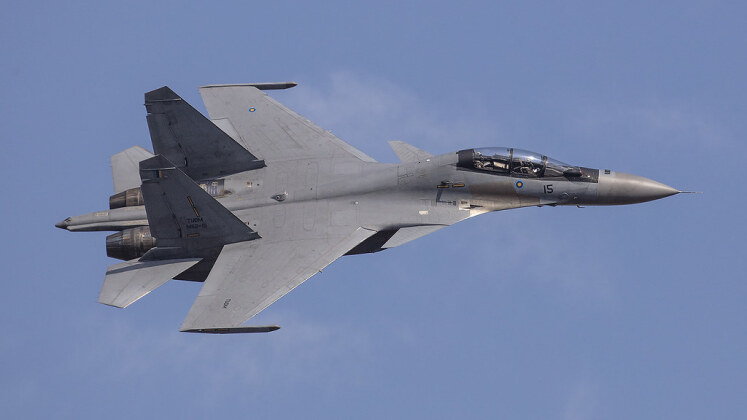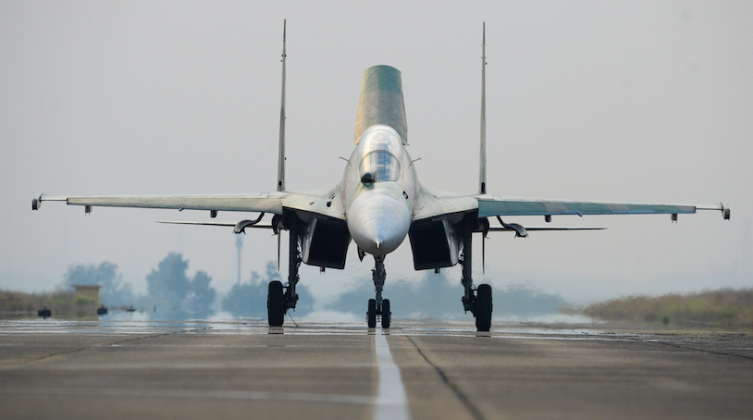Southeast Asia has emerged since the 1980s as one of the world’s leading arms markets, with defence industries in the region remaining limited and economies and defence budgets fast growing. While tensions in Southeast Asia have remained low and generally been mediated through the Association of Southeast Asian Nations (ASEAN), many countries have invested heavily in fielding formidable modern militaries with Russia being the leading arms exporter to the region followed by the United States. Although many countries such as Brunei and the Philippines have not invested in modern combat aviation, others such as Vietnam and Singapore field large air forces built around modern high endurance combat jets that can protect maritime claims and operate over long distances away from bases on land. A ranking and assessment of the most capable fighter jets in Southeast Asia provides some insight into the balance of power in the region, its security dynamics, and how countries have chosen to invest in their air forces.

1: Su-30MKM and Su-30SM – Malaysia and Myanmar
The Malaysian Air Force became the first in the region to deploy ‘4+ generation’ fighter jets when it took deliver of its first Su-30MKM heavyweight fighters in 2006. These replaced ageing F-5E Tiger II jets that had been supplied by the United States. The aircraft was at the time the most sophisticated Russia had ever exported, and was based on the Su-30MKI developed for the Indian Air Force but with minor changes to avionics. The Su-30MKI/MKM was a radical departure from the original Su-27 and Su-30 Flanker designs, and benefitted from features first demonstrated on the Su-35 and Su-37 prototypes including fully digital cockpit displays, electronically scanned array radars, thrust vectoring engines, greater uses of composite materials and modern electronic warfare systems and standoff missiles. The fighters continue to surpass any Western rival in endurance and manoeuvrability, and the design was later used a the basis for developing the Su-30MKA for the Algerian Air Force and the Su-30SM for the Russian Air Force and Navy, both of which are on order by the two countries today.
In the 2000s the Su-30MKM was one of the world’s most capable fighters, and the 18 delivered to Malaysia provided a considerably greater combat performance than all the country’s other air assets combined. Neglect for maintenance on all Malaysian fighter units, however, meant that the country subsequently struggled to keep the aircraft flying in the 2010s which was an issue also faced by its lighter MiG-29 and F-18 jets. The improved Su-30SM is currently on order by the Myanmar Air Force, its primary improvement being the integration of superior avionics and most importantly the N011M Bars radar with an extended 400km detection range and access to more modern R-37M missiles and SAP-518 jamming pods.

2: F-15SG – Singapore
Contracts for the acquisition of 40 F-15SG fighters made the Singaporean Air Force the world’s fifth export client for the F-15 Eagle after Israel, Japan, Saudi Arabia and South Korea. The variant developed for the city-state’s air force was considerably more sophisticated in its sensors and avionics and the first serial production variant to use an active electronically scanned array (AESA) radar. This provided superior electronic warfare capabilities and countermeasures, a lower radar signature, and superior situational awareness. The F-15 was considered the most capable fighter used by any Western air force during the Cold War, and export restrictions on the design were relaxed in the 2000s after the induction of its successor the F-22 Raptor into the U.S. Air Force made its technologies less sensitive. The fighters have a high endurance and carry large sensor suites, although still lower in both cases than the Su-30, and advancements made for the Singaporean contracts served as stepping stones for further modernisation to meet the needs of the air forces of Saudi Arabia, Qatar, and eventually the U.S. which resumed orders for F-15s after a 17 year stop in 2018.

3: Su-30MK2/MK – Vietnam and Indonesia
Unlike the Su-30MKM/SM produced at the Irkutsk Aviation Plant, the Su-30MK2 was developed as part of a separate family of fighters at the Komsomolsk-on-Amur Aircraft Plant, which after 2009 converted to producing the Su-35S for the Russian Air Force. The fighter was closely derived from the Su-30MKK custom developed for China’s air force, and the Chinese Navy became its first client in 2004. The aircraft was well optimised for maritime strike role with sophisticated avionics particularly for command, control, communications, computers, intelligence, surveillance, target acquisition and reconnaissance capabilities. The fighter would be acquired by Vietnam and Indonesia which field 35 and 9 respectively, with the latter also fielding two older Su-30MK fighters. The fighter benefits from the characteristic long range, high flight performance and powerful sensors of the Su-30 design and is equipped with a range of modern armaments such as Kh-31 Mach 3 anti ship missiles and R-77 anti aircraft missiles. It is still significantly less capable than the more costly Su-30MKM and Su-30SM which deviate more radically from the basic Su-30 design.

4: Su-27SK – Vietnam and Indonesia
Widely considered the most capable fighter to serve in any air force during the Cold War, the Su-27 Flanker first entered service in 1985 and was designed to outperform the U.S. Air Force’s F-15 Eagles. The fighter was widely exported during the 1990s and in Southeast Asia is currently operated by Vietnam and Indonesia which respectively field eleven and five fighters of the older Su-27SK variant. The Indonesian Air Force in the mid 1990s was set to become one of the world’s largest clients for the Su-27 Flanker aircraft, with plans announced for a fleet of over 100 of these jets to form the foundation of a modern fleet amid high tensions with Western powers over conflict in East Timor. The country’s limited defence budget, Western pressure and lack of long term acquisitions planning ended prospects for such a deal. Although formidable for its time, the Su-27 is increasingly considered outdated particularly the ageing 1990s variants fielded in Southeast Asia, with armaments, avionics and sensors all being far from state of the art. The fighter is nevertheless capable with the age of its radar compensated for by its sheer size, and its R-27 missiles still retaining an above average 130km engagement range although their electronic warfare countermeasures are out of date. The fighters are expected to be replaced in Vietnamese service by the Su-57, according to local media reports, and have been modernised conservatively with Belarusian assistance. The Su-57 has reportedly seen widespread interest in Southeast Asia, although interested parties other than Vietnam remain unknown.

5: MiG-29SE/SM – Myanmar
The MiG-29 medium weight fighter has been one of Russia’s most popular exports in the field of combat aviation. While prized for its low operational costs and impressive flight performance it has been less popular in Southeast Asia largely due to its low endurance and the vast ranges fighters in the region are generally required to cover. The fighter was designed to be able to outperform American F-16 and F-18 fighters during the Cold War, and even the very oldest variants have proven capable of challenging much heavier F-15s in air to air combat. The MiG-29 currently forms the backbone of Myanmar’s air force with an estimated 27 in service, of which 16 are modernised MiG-29SE and SM variants. These are considerably more capable than the MiG-29N fielded by the Malaysian Air Force, and benefit from new computers and flight controls, the L-203BE Gardeniya-1 electronic warfare system and a larger weapon payload over older variants. The fighters also boast Phazotron N019M radars which provide a multirole capability which older MiG-29s lack. Although still formidable by regional standards, Myanmar’s MiG-29s are nevertheless underwhelming in performance compared to modern variants such as the MiG-29M or the Indian Navy’s MiG-29K which use a very different post Cold War airframe design.
